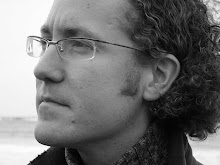So here it is: my thesis. After successfully passing my viva a few weeks ago I have finally finished tweaking and polishing my thesis so that it is now in a format that I can distribute. Feel free to download the thesis and print it off although I will warn you it is 389 pages long. Selective printing might be better for the rainforests.
If you wish to reference my thesis please use the reference below.
Smith, T. J. (2006) An Attentional Theory of Continuity Editing. Unpublished Doctoral Thesis.
I welcome all comments and questions about the thesis as well as peripheral issues. The thesis is a first stab at using cognitive science theories and methodologies to answer questions about how we watch film. The deeper I delved into the issues related to film perception, the more questions emerged. It is my hope that I will have the opportunity to investigate these questions in the future and that other researchers, from both cognitive science and film theory will also take an interest in answering these questions.
Whilst writing this thesis my love of film and adoration of filmmakers has grown inordinately. The insight into the human perceptual system exhibited by talented filmmakers is awe inspiring. The precision with which they appear to shape their audience’s experience of the film highlights how much further cognitive science has to go before we begin to get even close to understanding how perception works. By applying an analytical mind to the conventions and techniques used by filmmakers, it is my belief that cognitive scientists will learn a lot about the human perceptual system.
Film is a deviant reality that we, as members of its audience, have been successfully interacting with for over a century. By understanding how film differs from reality and why this difference has no negative effect on our ability to perceive film we will gain, not only a greater understanding of how we perceive film but also an insight into how we perceive reality.




No comments:
Post a Comment